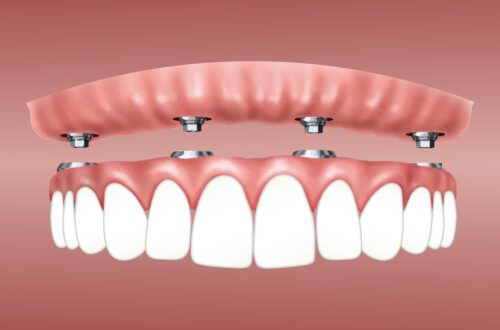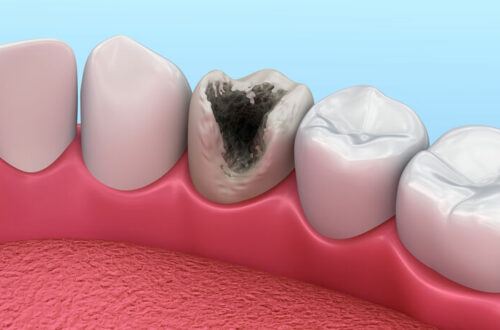Revitalize and Recover: How Tool Therapy Can Aid in Soft Tissue Rehabilitation
Are you tired of dealing with nagging soft tissue injuries that just won’t seem to heal? Do you wish there was a way to speed up your recovery and get back to doing the things you love? Look no further than tool therapy. This innovative approach to soft tissue rehabilitation is gaining traction among athletes, fitness enthusiasts, and anyone looking to revitalize their body. By utilizing specialized tools and techniques, tool therapy targets and treats specific areas of soft tissue damage, helping to break up scar tissue, improve blood flow, and accelerate healing. Whether you’re dealing with a stubborn muscle strain, a chronic tendonitis, or even the aftermath of a surgical procedure, tool therapy can be a game-changer in your road to recovery. In this article, we’ll explore the benefits of tool therapy, how it works, and why it’s becoming a go-to solution for those seeking fast and effective soft tissue rehabilitation. Get ready to say goodbye to pain and hello to a revitalized and recovered body!
Understanding soft tissue injuries and the recovery process
Soft tissue injuries, such as muscle strains, ligament sprains, and tendonitis, can be a frustrating and debilitating experience. These injuries often occur as a result of overuse, trauma, or improper technique during physical activity. The recovery process for soft tissue injuries can vary depending on the severity and location of the injury. In general, it involves three stages: inflammation, repair, and remodeling.
During the inflammation stage, the body’s natural response to injury, blood vessels dilate, allowing immune cells to enter the injured area and begin the healing process. This stage is characterized by pain, swelling, and redness. The repair stage follows, where new collagen fibers are produced to replace the damaged tissue. Finally, during the remodeling stage, the newly formed tissue gradually strengthens and reorganizes to restore its function.
While the body has its own mechanisms for healing soft tissue injuries, sometimes the recovery process can be slow and incomplete. Scar tissue may form, restricting movement and causing ongoing pain and discomfort. This is where tool therapy comes in. By targeting and treating specific areas of soft tissue damage, tool therapy can help break up scar tissue, improve blood flow, and accelerate the healing process.
Benefits of tool therapy for soft tissue rehabilitation
Tool therapy offers numerous benefits for soft tissue rehabilitation. One of the key advantages is its ability to break up scar tissue. Scar tissue can form as a result of soft tissue injuries, surgery, or repetitive stress. It can restrict movement, decrease flexibility, and cause chronic pain. Tools used in tool therapy, such as massage sticks, foam rollers, and massage balls, apply pressure and friction to the affected area, helping to break down scar tissue and improve range of motion.
Another significant benefit of tool therapy is improved blood flow. Soft tissue injuries can disrupt the normal blood circulation in the affected area, leading to decreased oxygen and nutrient supply to the tissues. By using tools to massage and stimulate the injured area, blood flow can be increased, delivering essential nutrients and oxygen to promote healing. Additionally, improved blood flow helps to flush out metabolic waste products, reducing inflammation and swelling.
In addition to breaking up scar tissue and improving blood flow, tool therapy also helps to relieve muscle tension and soreness. The pressure and friction applied by the tools can release tight muscles and trigger points, providing immediate relief and relaxation. This can be particularly beneficial for athletes and individuals who engage in intense physical activity, as it can help prevent muscle imbalances, reduce the risk of injury, and improve overall performance.
Types of tools used in tool therapy
Tool therapy utilizes a variety of specialized tools to target and treat soft tissue injuries. Each tool has its own unique shape, size, and texture, allowing for different techniques and applications. Here are some commonly used tools in tool therapy:
- Massage sticks: Also known as muscle rollers or muscle sticks, these long cylindrical tools are designed to apply pressure and friction to the muscles. They can be used to target specific muscle groups and release tension and knots. Massage sticks often have textured surfaces or knobs to provide a deeper massage effect.
- Foam rollers: Foam rollers are cylindrical tools made of dense foam. They are widely used for self-myofascial release, a technique that involves applying pressure to the muscles and fascia to release tightness and improve mobility. Foam rollers come in various sizes and densities, allowing for different levels of intensity.
- Massage balls: Massage balls are small, portable tools that can be used to apply targeted pressure to specific areas of the body. They are particularly effective for releasing trigger points and knots in hard-to-reach areas, such as the shoulders, hips, and feet. Massage balls can be made of foam, rubber, or even metal, offering different levels of firmness and texture.
- Graston tools: Graston tools are stainless steel instruments with specialized shapes and edges. They are designed to be used by trained professionals, such as physical therapists and chiropractors, to perform instrument-assisted soft tissue mobilization (IASTM). Graston tools are highly effective in breaking up scar tissue and adhesions, reducing pain, and improving range of motion.
These are just a few examples of the tools used in tool therapy. There are a wide variety of other tools available, each with its own unique benefits and applications. It’s important to consult with a qualified professional or therapist to determine the most suitable tools for your specific needs.
Techniques and best practices for using tools in soft tissue rehabilitation
While tool therapy can be highly effective in soft tissue rehabilitation, proper technique and best practices are crucial for safe and optimal results. Here are some key considerations when using tools for soft tissue rehabilitation:
- Warm-up: Before using any tools, it’s important to warm up the muscles and tissues. This can be done through light aerobic exercise, dynamic stretching, or even using a heating pad. Warm muscles are more pliable and responsive to the treatment, reducing the risk of injury.
- Proper positioning: When using tools, make sure to position yourself and the tool in a way that allows for optimal leverage and control. This may involve adjusting your body position, sitting or lying down, or using props and supports. Proper positioning ensures that the pressure and friction are applied effectively and without excessive strain.
- Gradual pressure: Start with gentle pressure and gradually increase as tolerated. Too much pressure can cause excessive discomfort or even injury. Listen to your body and adjust the pressure accordingly. It’s important to find a balance between therapeutic intensity and personal comfort.
- Slow and controlled movements: When using tools, maintain slow and controlled movements. Avoid fast or jerky motions, as they can be counterproductive and potentially harmful. Focus on the targeted area and apply the pressure in a deliberate and mindful manner.
- Communication and feedback: If you’re working with a therapist or professional, communicate any discomfort or pain during the treatment. They can adjust the technique or pressure to ensure your safety and comfort. If you’re performing self-treatment, pay attention to your body’s feedback and adjust as needed.
By following these techniques and best practices, you can maximize the effectiveness of tool therapy and minimize the risk of injury. It’s important to remember that tool therapy is not a one-size-fits-all approach, and individualized guidance from a qualified professional is highly recommended.
Case studies showcasing the effectiveness of tool therapy in recovery
The effectiveness of tool therapy in soft tissue rehabilitation is supported by numerous case studies and success stories. Let’s take a look at a few examples that highlight the positive outcomes achieved through tool therapy:
- Sarah’s shoulder injury: Sarah, a competitive swimmer, experienced a persistent shoulder injury that limited her training and performance. Traditional treatments, such as rest, ice, and physical therapy exercises, provided minimal relief. However, after incorporating tool therapy into her rehabilitation program, she noticed significant improvements in her shoulder mobility and strength. The targeted use of massage sticks and foam rollers helped break up scar tissue and release tension, allowing her to return to her sport with confidence.
- Mike’s chronic tendonitis: Mike, an avid runner, suffered from chronic Achilles tendonitis that had been affecting his training for months. Despite various treatments, including medication, rest, and physical therapy, the pain and inflammation persisted. After consulting with a sports therapist, Mike began using massage balls to perform self-massage on his calf muscles and Achilles tendon. Within a few weeks, he noticed a remarkable reduction in pain and an increase in flexibility. The targeted pressure and friction provided by the massage balls helped improve blood flow and promote healing in the affected area.
- Lisa’s post-surgical recovery: Lisa underwent knee surgery to repair a torn meniscus. While she followed her rehabilitation program diligently, she experienced persistent stiffness and limited range of motion. Her physical therapist recommended incorporating Graston tools into her treatment plan to address scar tissue and adhesions. With the guidance of her therapist, Lisa used the Graston tools to perform gentle scraping motions on her surgical site. Over time, she noticed a significant improvement in her knee mobility and a reduction in pain. The Graston tools helped break down scar tissue and promote proper healing, allowing Lisa to regain her active lifestyle.
These case studies demonstrate the potential of tool therapy in facilitating faster and more effective soft tissue recovery. However, it’s important to note that individual results may vary, and professional guidance is essential to ensure safe and appropriate use of tools.
Integrating tool therapy into a comprehensive rehabilitation program
Tool therapy can be a valuable addition to a comprehensive rehabilitation program for soft tissue injuries. While tools can provide targeted treatment and immediate relief, they are most effective when used in conjunction with other rehabilitation techniques and modalities. Here are some ways to integrate tool therapy into a comprehensive program:
- Professional guidance: Seek guidance from a qualified physical therapist, chiropractor, or sports therapist who has expertise in tool therapy. They can assess your specific condition, develop a tailored treatment plan, and provide hands-on guidance and support throughout your recovery journey.
- Exercise and stretching: Combine tool therapy with targeted exercises and stretching routines. Strengthening exercises can help improve muscle imbalances and support injured tissues, while stretching exercises can improve flexibility and prevent further injury. Your therapist can guide you in selecting appropriate exercises and incorporating tools for optimal results.
- Modalities and adjunctive therapies: Consider incorporating other modalities and adjunctive therapies to enhance the effects of tool therapy. These may include cold therapy, heat therapy, electrical stimulation, and ultrasound. Your therapist can determine the most suitable modalities based on your specific needs and goals.
- Progressive treatment plan: Develop a progressive treatment plan that gradually increases in intensity and complexity. Begin with gentle techniques and tools, gradually progressing to more advanced techniques as your body adapts and heals. This approach ensures a safe and effective recovery process.
By integrating tool therapy into a comprehensive rehabilitation program, you can optimize your chances of a successful recovery and long-term improvement. Remember to consult with a professional to ensure that the program is tailored to your specific needs and goals.



